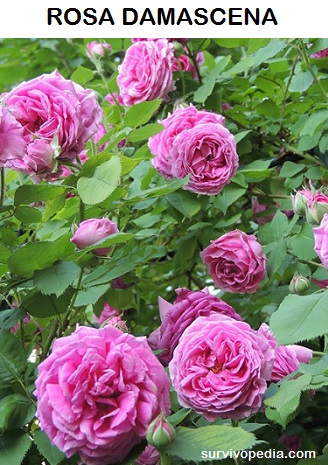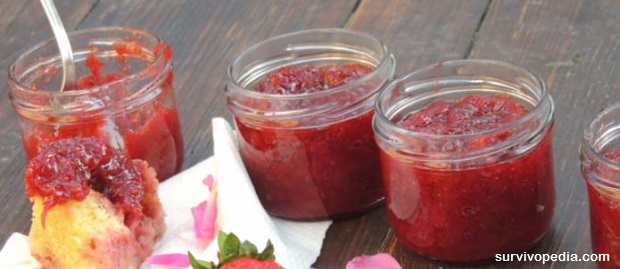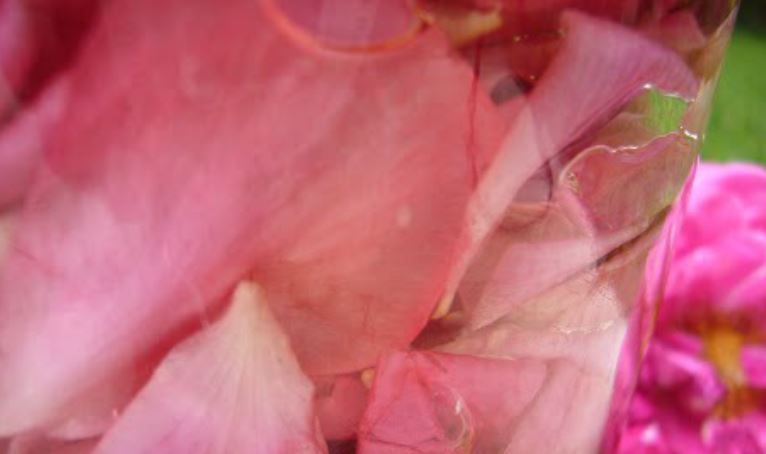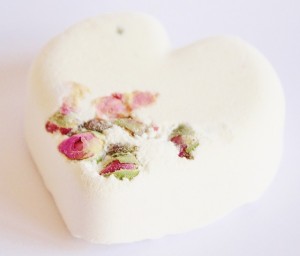They’re beautiful, they smell great, and they’re the chosen gift for everything from saying, “I love you”, to “I’m sorry”.
Roses are probably the best known of all flowers, but there is much more to them than just a pretty face. They’re a great plant to grow for survival. Read the article so see how many survival uses they have!
Plant Roses as a Defensive Measure
As you know, every rose has its thorns! In this case, that’s a great thing. If given a plain fence to jump over, or a hedge of thorny roses, raiders are going to choose the easy path.
Also, roses provide great cover. You can plant trellises of them around your garden and people will assume that you have a flower garden and be less likely to sneak in to take a peek around. You basically have an edible defense system!
Both rose petals and rose hips, the little berries that show up on the rose bush in the spring, are edible. It’s likely that you’ve heard of rose hip tea but you probably never thought of popping a petal into your mouth. Before we get into some of the great ways to use roses, let’s set some guidelines.
You’ll want to grow roses that are great for creating cover and for use in recipes, so choose carefully. Heirlooms are great, but base your decision on roses that suit your needs for flavor, scent, and defense.
Find Roses that Smell Good
Likely, if you like the way a rose smells, you’ll like the way it tastes. Some roses, such as red roses, tea roses, or endless blooming roses have very little flavor or smell but yellows, whites, and pinks usually have pleasing scents and tastes.

These roses were traditionally used for making jelly, oil, and cosmetics.
The tip of the rose petal where it joins the base of the flower is often bitter, so you may want to avoid eating those.
Make sure that your roses aren’t coated in fertilizers or herbicides. That would obviously be bad.
The best time to pick your rose petals are in midmorning after the dew has dried up but before the heat of the day has settled in. You can store them in the fridge for up to a week.
Rose Petal Vinegar
This may not exactly be the first thing that you think of when you hear the word “roses”, but rose petal vinegar is relatively easy to make and has some pretty amazing health benefits.
To start, consider the benefits of the base. You can use any type of vinegar that you’d like but apple cider vinegar has a ton of health benefits too, so you’ll get more bang for your buck using it.
Internally, rose petal vinegar is purported to be good for stopping bleeding, discharging phlegm, and relieving PMS, hot flashes and inflammation. It’s also calming and good for relieving depression and mental and physical fatigue.
Externally, it’s good for toning and refreshing your skin, evening skin tone, relieving skin conditions and blemishes, and preventing or reducing wrinkles. Gargle it for relief of a sore throat. Rose vinegar is good for soothing sunburn and relieving the itch of bug bites.
Oh, and it makes a delicious salad dressing! Depending on your preferences, there are many ways to work this into recipes. To make rose vinegar, simply follow these steps:
- place 3 ounces of rose petals in a jar,
- cover with 16 ounces of organic ACV (or whichever vinegar you prefer),
- cover, then let it sit for at least 5 days.
The longer you let it sit, the better. Store in a cool, dark place and it will last 6 months or more.
Rose Petal Oil
Many of the benefits of rose vinegar are found in rose petal oil, but without the smell of vinegar. The thing about making essential oils is that it typically requires a distillation process which is a bit complicated for a beginner. Instead, you can make an infusion by using an oil base.
Good oils to start with include olive, coconut, jojoba, and almond so just go with what you prefer. Use roses that have just begun to open and pick the petals midmorning.
To make the oil:
- Pick 1/4 cup rose petals and place them in a plastic storage bag. Use a small mallet or can to gently bruise them to release the oil.
- Place the bruised petals in a small jar and add 1/2 cup oil to them. Seal the jar up and let it set overnight. Strain the petals from the oil and add another 1/4 cup crushed petals and repeat the process until the oil is scented strongly enough to suit you.
Health benefits include nervous system rejuvenation, relief of depression or anxiety, inflammation relief, fever reduction, and antiseptic qualities.
Homemade Soap
Rose petals and rose petal oil are great ingredients to include in your soap.
It’s wonderfully relaxing when used in a relaxing bath and it makes you smell great, too.
You can either place the petals directly into the soap, which also makes it pretty, or you can use the oil that you made before.
Rose Petal Syrup
This syrup is delicious to use with everything from pancakes to tea, and it’s easy to make, too. The color and flavor of the rose will determine the flavor and color of the syrup so choose a rose petal that you love. Here’s the recipe:
Ingredients:
- 1 cup rose petals, tightly packed
- 3 cups water
- 4 cups sugar
Directions:
Put the rose petals and water in a wide, deep pan and let it sit overnight. In the morning, add the sugar to the water and cook the mixture at a simmer until it thickens to syrup consistency. Allow to cool. Strain the rose petals out and pour the syrup into a bottle with a snug lid.
Rose Jelly
Ahh…one of the most delicate signs that spring has arrived is the blooming roses in the yard. That brings to mind my grandma’s rose jelly. She always left a few of the petals in the jelly to make it pretty.
In other words, canning is very effective as a means of storage and, when canned properly, fruits and even flowers will last for a decade or longer.
You want to use really fragrant roses for this, and the color will, of course, determine the color of the jelly. Choose roses that are almost fully open but not fading.
Ingredients:
- 2 pints tightly packed, cleaned rose petals
- 14 oz. granulated sugar
- 3.5 oz. super fine sugar
- 1/4 cup lemon juice
- 1 pint water
- 2.5 fluid oz. liquid pectin
Directions:
Combine both sugars and the water in a large pan. Heat it until the sugar is dissolved. Stir in the petals and allow to cool. Let the petals steep in the syrup for 3-4 hours. While you’re waiting, sterilize your jars and get your seals and rings ready.
Strain the petals from the liquid. Add the lemon juice (the color will sharpen), then return to heat. Bring to a slow boil and boil for 5 minutes. Remove from heat and add the pectin. If you’d like to add a few petals back in for aesthetic reasons, now would be the time. Return to a boil and boil slowly for another 10 minutes.
Remove from heat and allow to rest for a couple of minutes. Pour your brand new rose jelly into your jars and clean the rims. Add the seals and rings and allow to cool.

Scenting Pillows
As we’ve already discussed, roses have a calming, mentally boosting effect that makes them great for scenting pillows. My grandmother used to store rose blossoms in her towel closets and may sometimes even throw a few into the dryer as she dried the pillowcases.
This is only the beginning of a very long list of great uses for rose petals. You can make rose tea, rose honey, and even rose shampoo or just hair rinse. Hopefully, I’ll be writing more on this soon!
If you have any good rose-related tips or recipes you’d like to share, please do so in the comments section below.
This article has been written by Theresa Crouse for Survivopedia.











Pingback:Survival Secrets From Your Garden: How to Use Roses | Survivopedia – deepsouthsurvival22 | May 16, 2016
|